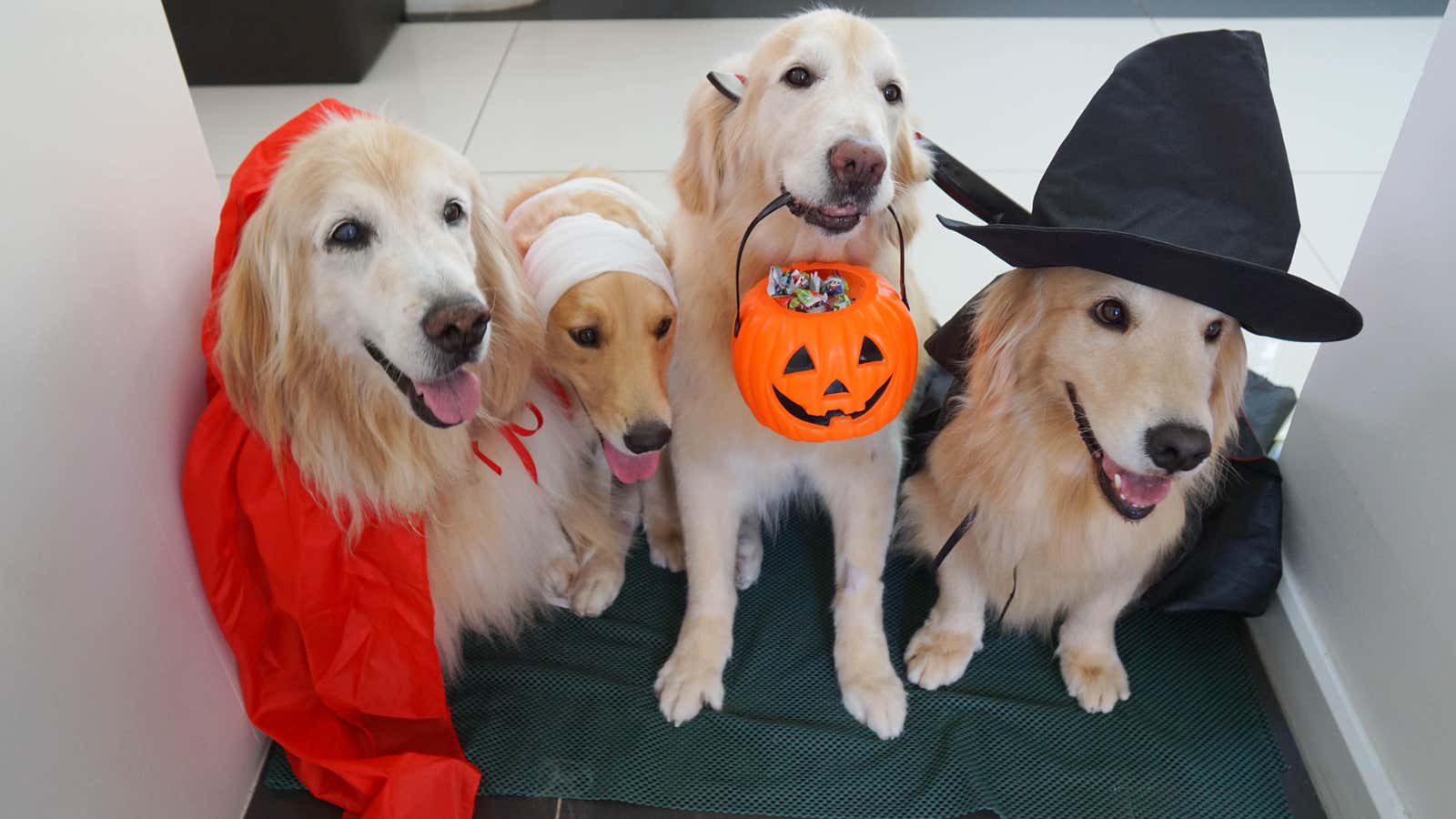Don’t Give Your Pets Halloween Candy.

If you’re feeling tempted to give your pet a lollipop this Halloween, here’s a quick reminder: don’t do it. While candy may seem harmless enough, your pet cannot safely eat most commercial candy, and in some cases, the choice of sweets can even prove fatal .
What kind of candy should you be wary of? On the Pet Poisoning Hotline website, they’ve put together some tips on what your pet can’t eat and what to do in an emergency.
Chocolate
Unsurprisingly, chocolate isn’t suitable for most pets; chocolate contains compounds called methylxanthines, including caffeine and theobromine, which are toxic to pets. As we wrote earlier , the dangers associated with chocolate, such as hyperactivity, heart damage, seizures, and death, depend on the size of the dog, the amount eaten, and the type of chocolate.
If your dog is small and has eaten several bars of dark chocolate, this is probably much more of a concern than a large dog eating one crumb of milk or white chocolate. (White chocolate contains almost no methylxanthines, while dark chocolate and baking chocolate are the most concentrated; generally, the darker or bitter the chocolate, the more likely it is to be toxic.)
Misconceptions notwithstanding, cats are also generally lactose intolerant and may experience stomach upset or diarrhea after eating any sweets with milk (including chocolate). While they may not need a veterinarian visit, avoid giving cats chocolate treats to prevent stomach problems.
Things to watch out for: Vomiting, diarrhea, restlessness, and increased urination .
Grapes and raisins
If you’re a healthy home in this block, grapes and raisins aren’t that good for pets either – both can cause kidney failure in dogs, although it’s not known what causes them to be toxic or the amount it would take to cause serious health problems. (In a story on the ASPCA website, one small dog was poisoned after eating 10 grapes.)
Things to watch out for: Vomiting, nausea, decreased appetite, lethargy, and severe kidney failure.
Candy wrappers
So your dog ran away with a huge Snickers bar. In addition to being toxic, the wrapper itself can cause serious digestive problems for your pet. According to the pet poisoning hotline , the use of the wraps can cause intestinal obstruction, which may require surgery. However, a smaller candy wrapper may be less of a concern than a larger one and will pass through your pet’s digestive system as usual.
Things to watch out for: Vomiting, difficulty having a bowel movement, and decreased appetite.
Sugar-free products
If you don’t know what xylitol is, here’s a quick introduction; Xylitol is a “sugar-free” sweetener / substitute added to chewing gum, mint, gummy vitamins, baked goods, and even peanut butter brands. It is usually a low-calorie alternative to sugar, which makes it a fairly popular supplement (and safer for diabetics). But xylitol is extremely toxic to dogs – small amounts can cause hypoglycemia, seizures, liver failure, and even death.
While you won’t always find the exact amount of xylitol indicated on a candy’s ingredient label, you should be wary of any xylitol-containing candy or any sugar-free candy in general. The effects of xylitol on cats are little known. A little research suggests it may not be as toxic to them, but why take the risk?
What to look for: decreased activity, weakness, staggering, impaired coordination of movements, collapse and seizures .
If you are worried about your pet and have any of these symptoms other than foam at the mouth, contact your veterinarian immediately; otherwise, contact the Pet Poisoning Hotline for emergency resources.
If you are planning to dress up your pet, the organization also cautions against accidentally swallowing metal beads, pops or other small objects that could cause digestive problems, as well as “non-toxic” dyes that may still pose a hazard to your pet. Always read the labels and if in doubt, skip the candy or costume.